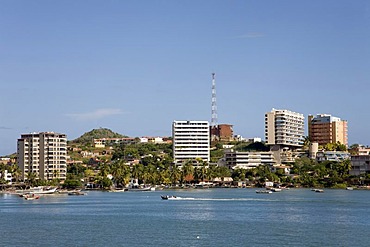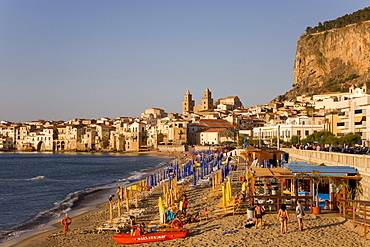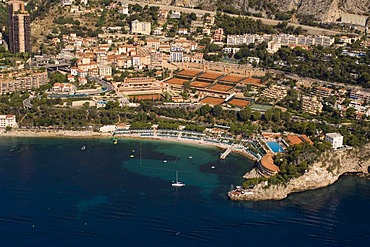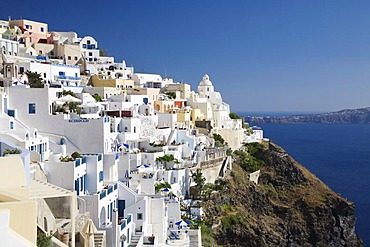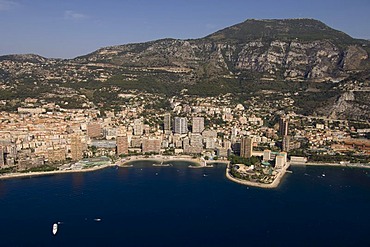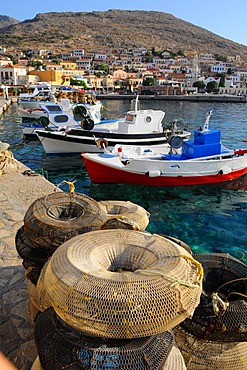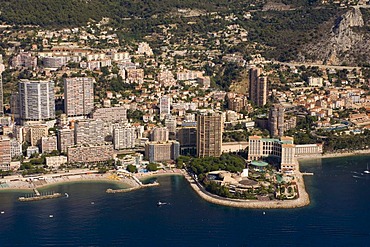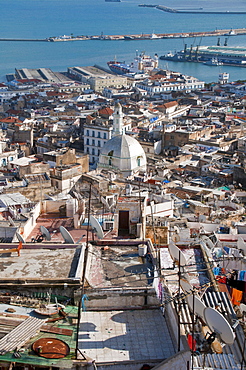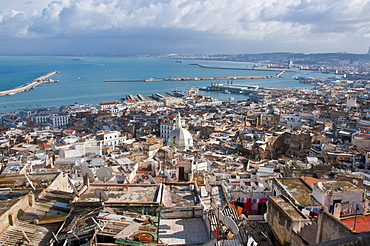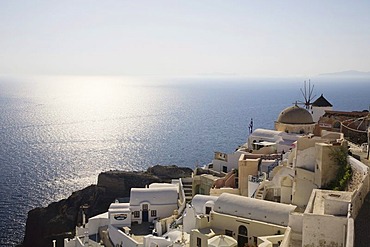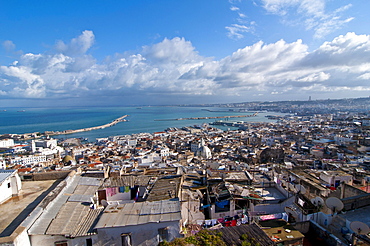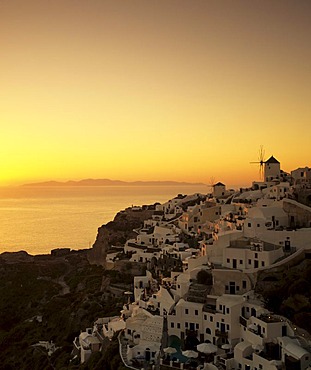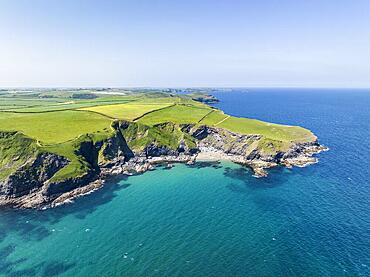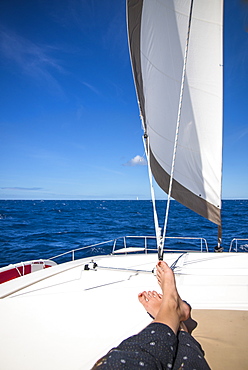Results
5 results found

A Crown-of-Thorns starfish (Acanthaster planci) on a badly damaged section of a coral reef in Gaaful Dhaalu atoll, in the faer south of the Maldives.
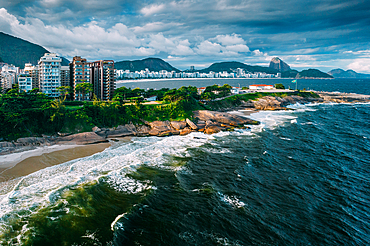
Aerial drone view of Arpoador section of Ipanema Beach with Copacabana and Sugarloaf Mountain visible in the background, Rio de Janeiro, Brazil, South America
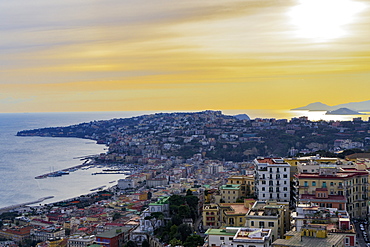
Panoramic sunset view of Mergellina coastal section seen from Sant Elmo castle in Naples, Campania, Italy, Europe
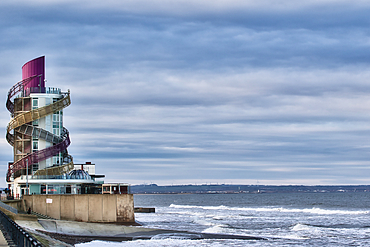
Coastal building with spiral slides, situated on a seawall overlooking a wavy ocean under a cloudy sky. The structure is multi-colored and features a glass-fronted lower section in Redcar, UK.
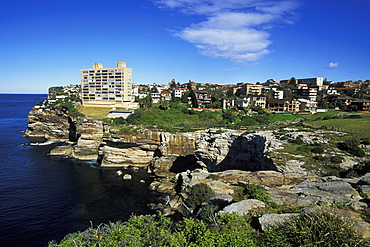
The Diamond Bay Reserve section of the Dover Heights to Vaucluse Cliff Walk, a very popular 3km coastal hike north of Bondi, Dover Heights, Eastern Suburbs, Sydney, New South Wales, Australia, Pacific
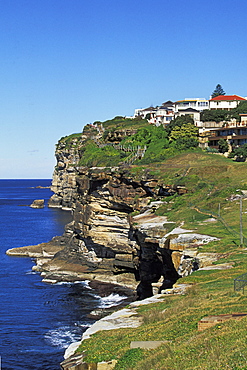
The Eastern Reserve section of the Dover Heights to Vaucluse Cliff Walk, a very popular 3km coastal hike north of Bondi, Dover Heights, Eastern Suburbs, Sydney, New South Wales, Australia, Pacific
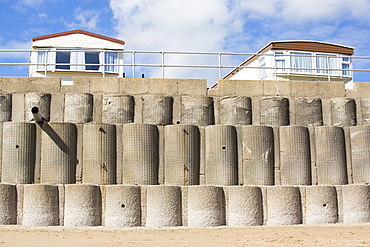
Concrete sea defences at Beach Bank Caravan Park in Ulrome near Skipsea on Yorkshires East Coast, UK. The coast is composed of soft boulder clays, very vulnerable to coastal erosion. This section of coast has been eroding since Roman times, with many villages having disappeared into the sea, and is the fastest eroding coast in Europe. Climate change is speeding up the erosion, with sea level rise, increased stormy weather and increased heavy rainfall events, all playing their part.
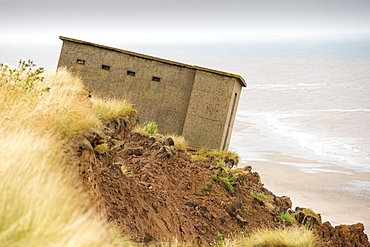
A Second world War lookout post leaning alarmingly and about to tumble over the edge of the cliff near Aldbrough on Yorkshires East Coast, UK. The coast is composed of soft boulder clays, very vulnerable to coastal erosion. This section of coast has been eroding since Roman times, with many villages having disappeared into the sea, and is the fastest eroding coast in Europe. Climate change is speeding up the erosion, with sea level rise, increased stormy weather and increased heavy rainfall events, all playing their part.
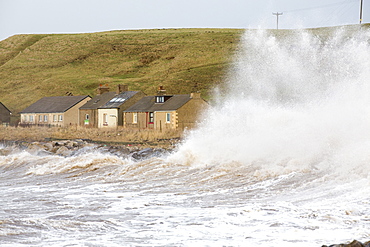
Waves crashing off Parton near Whitehaven during the January 2014 period of storm surge, high tides and storm force winds. The coastline took a battering, damaging the harbour wall and eroding a large section of coastal cliff.
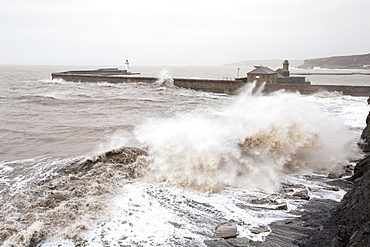
Whitehaven harbour during the January 2014 period of storm surge, high tides and storm force winds. The coastline took a battering, damaging the harbour wall and eroding a large section of coastal cliff.
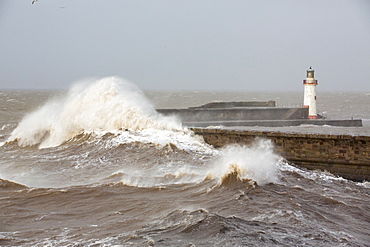
Whitehaven harbour being completely overwhelmed by huge waves during the January 2014 period of storm surge, high tides and storm force winds. The coastline took a battering, damaging the harbour wall and eroding a large section of coastal cliff.
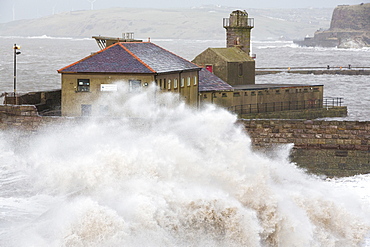
Whitehaven harbour during the January 2014 period of storm surge, high tides and storm force winds. The coastline took a battering, damaging the harbour wall and eroding a large section of coastal cliff.
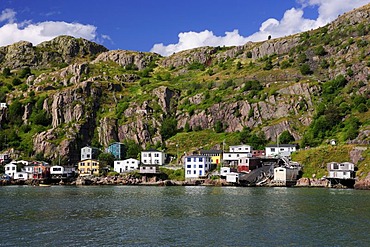
The Signal Hill neighborhood at the port of St. John's, the capital of Newfoundland, Canada, North America
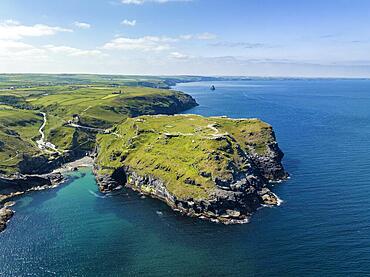
Aerial view of the rugged coastline on the Celtic Sea with the Tintagel Peninsula and the ruins of Tintagel Castle, North Cornwall, England, Great Britain
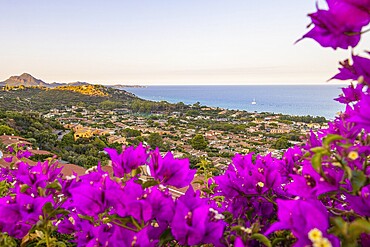
From the hilly hinterland you have an unobstructed view over the Costa Rei, a south-eastern coastal section of the Italian Mediterranean island of Sardinia, Sardinia, Costa Rei, Italy
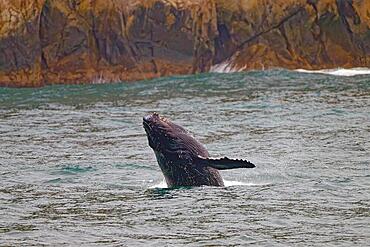
Humpback whale (Megaptera novaeangliae) up to the pectoral fin above the water surface, rocky coastline behind, Kenai Fjords National Park, Alaska, USA, North America
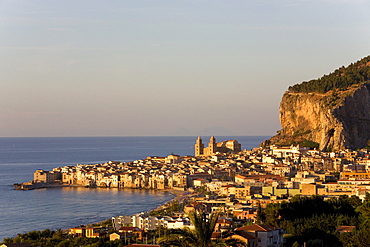
Medieval historic town centre by the sea, Rocca de Cefalu, Cefalu, Province of Palermo, Sicily, Italy, Europe
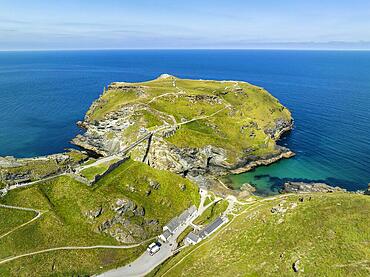
Aerial view of the rugged coastline on the Celtic Sea with the Tintagel Peninsula and the ruins of Tintagel Castle, North Cornwall, England, Great Britain
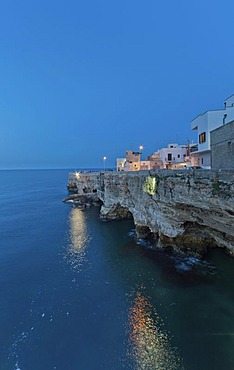
Polignano a Mare, historic town centre built on the cliffs by the sea, Apulia, Southern Italy, Italy, Europe
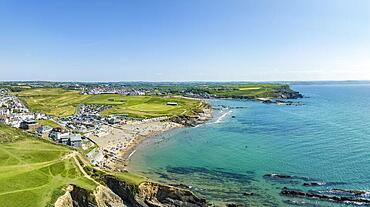
Aerial panorama of the coastline of Bude Bay with bathing beaches Crooklets Beach, Summerleaze Beach, far right Compass Point, Bude, North Cornwall, England, United Kingdom, Europe
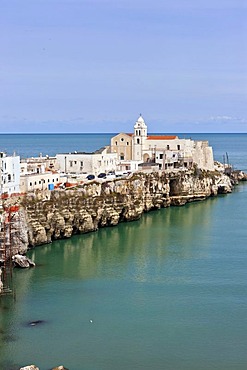
Historic town centre of Vieste, looking towards the Cathedral of Vieste, Gargano, Foggia, Apulia, Puglia, Southern Italy, Italy, Europe
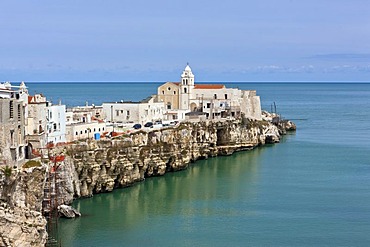
Historic town centre of Vieste, looking towards the Cathedral of Vieste, Gargano, Foggia, Apulia, Puglia, Southern Italy, Italy, Europe
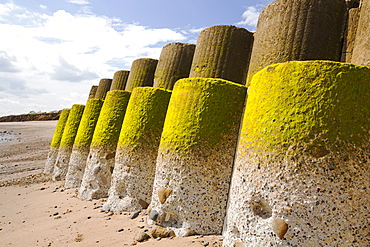
Smashed concrete sea defenses at Ulrome near Skipsea on Yorkshires East Coast, UK. The sea has eroded past the barriers and left them stranded further down the beach. The coast is composed of soft boulder clays, very vulnerable to coastal erosion. This section of coast has been eroding since Roman times, with many villages having disappeared into the sea, and is the fastest eroding coast in Europe. Climate change is speeding up the erosion, with sea level rise, increased stormy weather and increased heavy rainfall events, all playing their part.
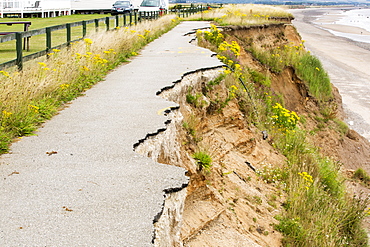
A collapsed coastal road at Barmston on Yorkshires East Coast, near Skipsea, UK. The coast is composed of soft boulder clays, very vulnerable to coastal erosion. This section of coast has been eroding since Roman times, with many villages having disappeared into the sea, and is the fastest eroding coast in Europe. Climate change is speeding up the erosion, with sea level rise, increased stormy weather and increased heavy rainfall events, all playing their part.
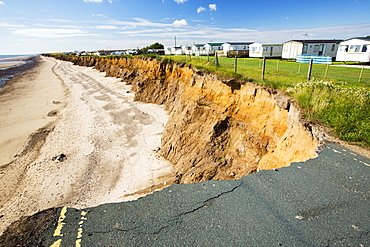
A collapsed coastal road at between Skipsea and Ulrome on Yorkshires East Coast, near Skipsea, UK. The coast is composed of soft boulder clays, very vulnerable to coastal erosion. This section of coast has been eroding since Roman times, with many villages having disappeared into the sea, and is the fastest eroding coast in Europe. Climate change is speeding up the erosion, with sea level rise, increased stormy weather and increased heavy rainfall events, all playing their part.
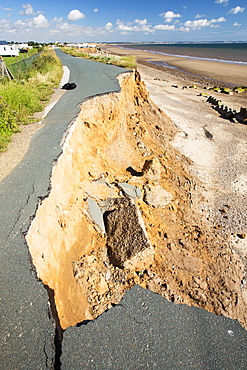
A collapsed coastal road at between Skipsea and Ulrome on Yorkshires East Coast, near Skipsea, UK. The coast is composed of soft boulder clays, very vulnerable to coastal erosion. This section of coast has been eroding since Roman times, with many villages having disappeared into the sea, and is the fastest eroding coast in Europe. Climate change is speeding up the erosion, with sea level rise, increased stormy weather and increased heavy rainfall events, all playing their part.
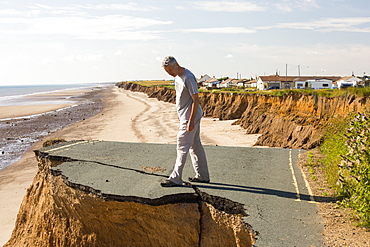
A collapsed coastal road at between Skipsea and Ulrome on Yorkshires East Coast, near Skipsea, UK. The coast is composed of soft boulder clays, very vulnerable to coastal erosion. This section of coast has been eroding since Roman times, with many villages having disappeared into the sea, and is the fastest eroding coast in Europe. Climate change is speeding up the erosion, with sea level rise, increased stormy weather and increased heavy rainfall events, all playing their part.
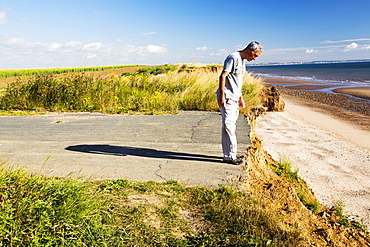
A collapsed coastal road at near Aldbrough on Yorkshires East Coast, near Skipsea, UK. The coast is composed of soft boulder clays, very vulnerable to coastal erosion. This section of coast has been eroding since Roman times, with many villages having disappeared into the sea, and is the fastest eroding coast in Europe. Climate change is speeding up the erosion, with sea level rise, increased stormy weather and increased heavy rainfall events, all playing their part.
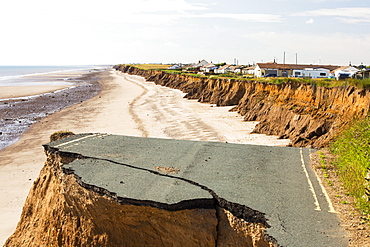
A collapsed coastal road at between Skipsea and Ulrome on Yorkshires East Coast, near Skipsea, UK. The coast is composed of soft boulder clays, very vulnerable to coastal erosion. This section of coast has been eroding since Roman times, with many villages having disappeared into the sea, and is the fastest eroding coast in Europe. Climate change is speeding up the erosion, with sea level rise, increased stormy weather and increased heavy rainfall events, all playing their part.
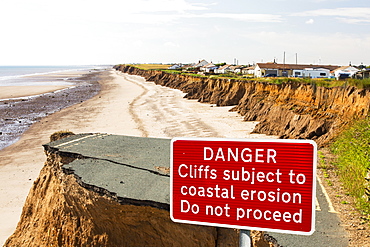
A collapsed coastal road at between Skipsea and Ulrome on Yorkshires East Coast, near Skipsea, UK. The coast is composed of soft boulder clays, very vulnerable to coastal erosion. This section of coast has been eroding since Roman times, with many villages having disappeared into the sea, and is the fastest eroding coast in Europe. Climate change is speeding up the erosion, with sea level rise, increased stormy weather and increased heavy rainfall events, all playing their part.
